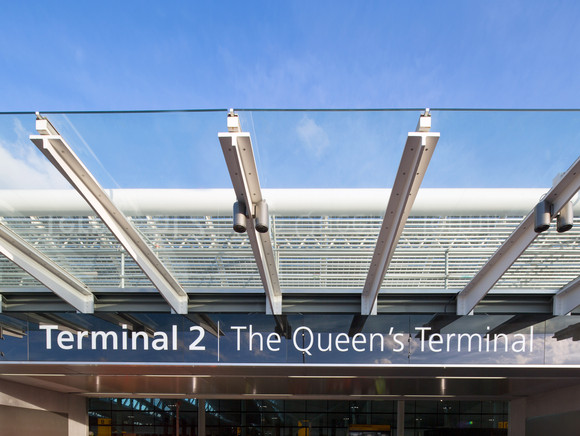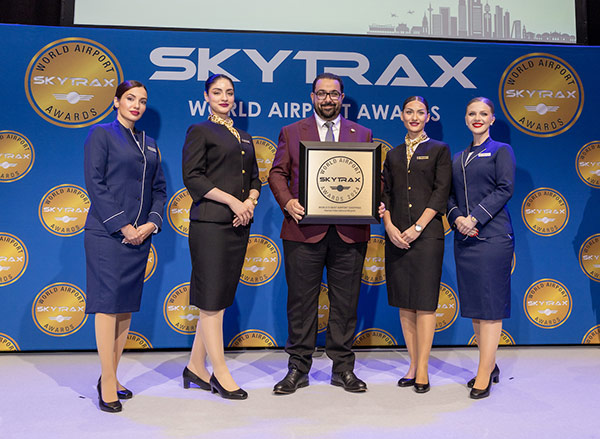INTERNATIONAL. James Lennon is Business Development Director at Acxiom, a technology and services company enabling people-based marketing via a data-driven approach.
In this special guest column, he looks at the evolving role of airports as destination brands in their own right, and how a data-driven approach to their marketing and traveller communications can also benefit and be shared with retailers. This strategy is already live at the UK’s global hub Heathrow Airport.

Given the UK’s role as an air travel hub, it’s looking highly likely that impending Brexit upheaval will not be confined simply to within the nation’s borders.
If we look at just Heathrow and Gatwick, out of the UK’s many airports, they serve some 125 million passengers between them annually. Many of these flights connect through to other destinations, airports and airlines including low-cost carriers such as Ryanair and easyjet. Brexit or no Brexit, airports the world over need to be offering the best possible experiences for their passengers to ensure the vitality of the travel sector.
As we saw this summer at many European airports with the introduction of more rigorous security checks, once flights are booked the terminals will be where most passengers will feel the impact of Brexit on their travel experience, and in particular, potential extended security/passport controls and new allowances in what can be carried.
Airports will need to significantly increase their focus on the customer experience, engaging with passengers earlier and more personally to ensure they are reassured and confident that everything will be as seamless, straightforward and stress free as possible.
However, when considering the overall travel journey, many airports focus solely on passenger flow at the expense of the holistic terminal experience. Rightfully, the top priority for airports will remain the safe and efficient flow of people between ‘kerbs, platforms and gates’ however, there is a fast growing acceptance that the retail experience is a fundamental driver of both customer satisfaction, spend and in turn the airport’s financial success. As we’ll go on to show, one of the world’s most famous airports has done exactly that, leading to an increase in average revenue per engaged customer of +23%.
Early engagement
Airports need to engage from the moment a trip is planned, whether flights or hotels, through to advance purchase of car parking or train tickets.
Of course, added to the physical experience of getting to the airport and the amount of time spent checking in, dropping bags, passing through security and waiting for gates to be announced, there is massive potential for brands to engage with and entertain passengers. These days travel retail is a vital part of this journey and this is where developments in data connectivity and passenger engagement can play a transformational role.

The airport buildings themselves have become much smarter, and more digitally connected spaces. For example, you would be hard pushed to find one which doesn’t offer Wi-Fi to its guests. Taking this internet connectivity a step further, some forward-thinking airports are starting to explore their role in facilitating and linking together the whole experience for passengers. They’re creating deeper, more resonant, anticipated and meaningful customer experiences which reach across all of the concessions and brands who live within the terminal, or in the cases of some airports, terminals.
The Heathrow experience
One great example is Heathrow Airport. Until recently, its customers were experiencing disparate journeys with the brand – dealing with Heathrow Express trains, its car parking operators, the main airlines and retail and food outlets. There were dozens of disconnected companies and experiences for a passenger rather than one umbrella brand, which is actually how travellers viewed Heathrow. The ‘Heathrow experience’ was piecemeal, and customers wanted it to be much more unified.
By working with Acxiom’s data, technology and services along with Adobe’s Experience Cloud, Heathrow is able to get to know its travellers, and then take steps to engage with them on a more personalised, one-to-one level, before, during and after their visit to the site.

The first step involves unifying that data, as much of it is owned or gathered by the 345 different food and retail concessions housed in the terminals. This recognition of the customers passing through the airport is critical. Understanding who these people are is the essential first stage in comprehending their motivations for travelling, who they may be travelling with, and how they might want to spend their time and even money while waiting for their flight.

For retailers, Heathrow undertaking this analysis offers them both scope and a new potential platform to engage. Imagine, for example, if Links of London, Kurt Geiger or Dixons could send loyal customers unique offers, and suggest deals or exclusive ranges available only as they pass through terminal five. The service can go much further to surprise and delight stressed travellers on arrival. Thanks to geo-fencing, Heathrow can identify customers and service relevant information to them the moment they approach the airport, let alone step through its doors. So Costa Coffee could welcome travellers on arrival with a ‘Hope your flight is not latte croissant the Atlantic’ offer!
The benefits to retail and food outlets who work with Heathrow are clear. Heathrow can understand and grow incremental revenues from happy passengers who get more out of the time spent under its roof. The stores themselves gain a new, highly-targeted communications channel and also benefit from higher sales as customers take advantage of offers and information sent to them in advance – potentially even weeks before they are due to fly. The insight gleaned is guided back into the next engagement, and the next, continually delivering on its promise to ‘make every journey better’.
For concessions, they can pinpoint and market to different customer types in suitable ways, rather than offering one-size fits all offers and communications. Through this Connected Spaces solution, Heathrow can recognise that, if people are rushing, offering ‘Click and Collect’ via its Heathrow Boutique service at airport prices, prompted through the Heathrow app, are very likely to delight that passenger. If they are facing delays and a frustrating wait, an offer to dine and feel refreshed will help alleviate their tension. If they are travelling as a family, suggesting lounge access or offers on beach toys will kick start their holiday. These are the kinds of tailored engagements which can boost brand connections and build lifelong relationships – long after the journey has ended.
Average spend per passenger engaged has increased by 23%, per visit, the airport’s loyalty programme has been boosted by a fifth, and linked loyalty purchases are up some 22%.
Given technological developments and the already near ubiquitous nature of mobile internet connectivity, it is likely that these connected spaces will become much more widespread in the future as brands seek tailored opportunities to engage with people one-to-one, in places where they congregate. However, for a location like Heathrow, the unique advantages and potential it offers to its retail and food partners are already proving transformative.
Average spend per passenger engaged has increased by 23%, per visit, the airport’s loyalty programme has been boosted by a fifth, and linked loyalty purchases are up some 22%. Clearly, Heathrow’s passengers are responding to this effective and highly personalised way of unifying the airport experience, and making it work for them as they journey. By connecting the spaces they move through, passengers are able to build their own brand journeys through the airport – and benefit directly as they do so.
Although much is still to be determined on Brexit, Heathrow has put in place the capability to engage, reassure, build passenger confidence in their future travel experience and maintain its role as a global hub.












